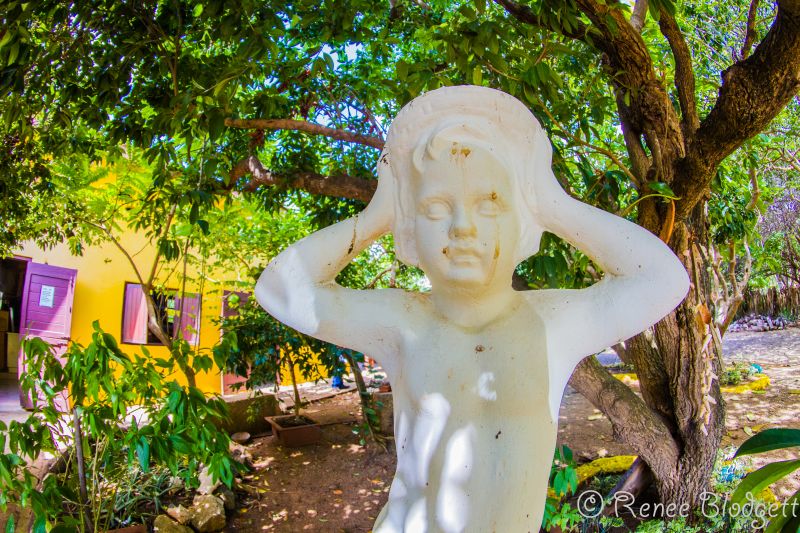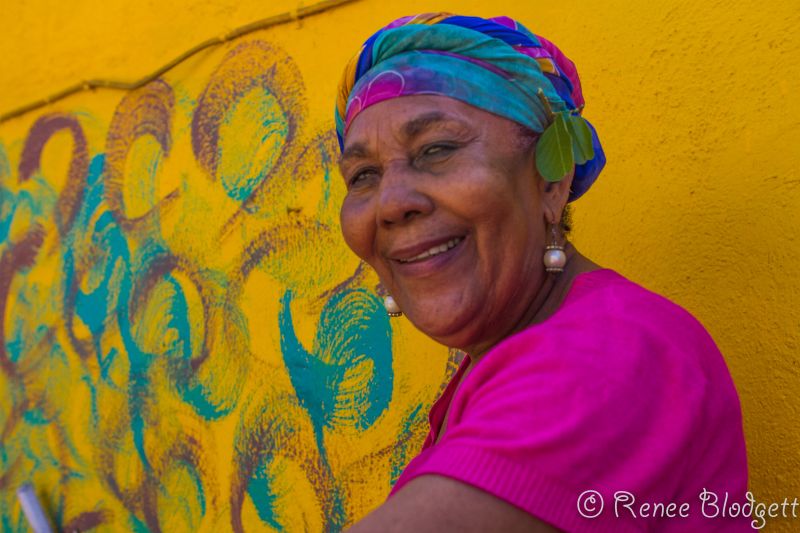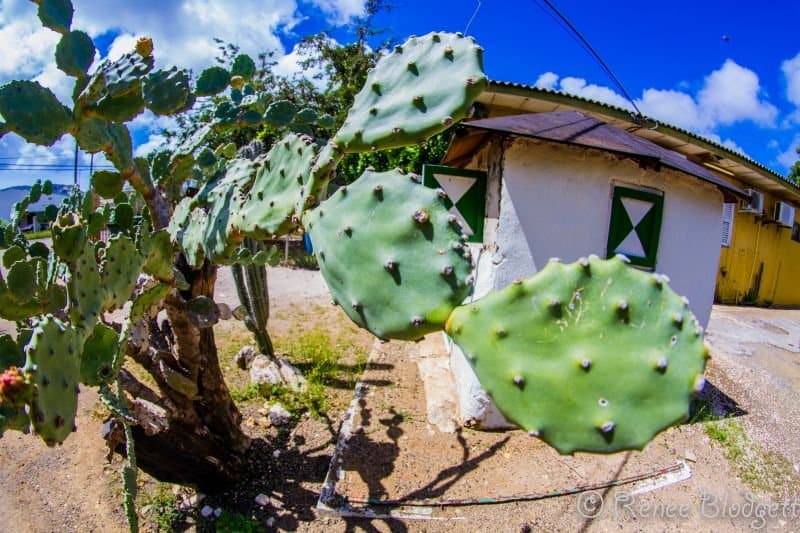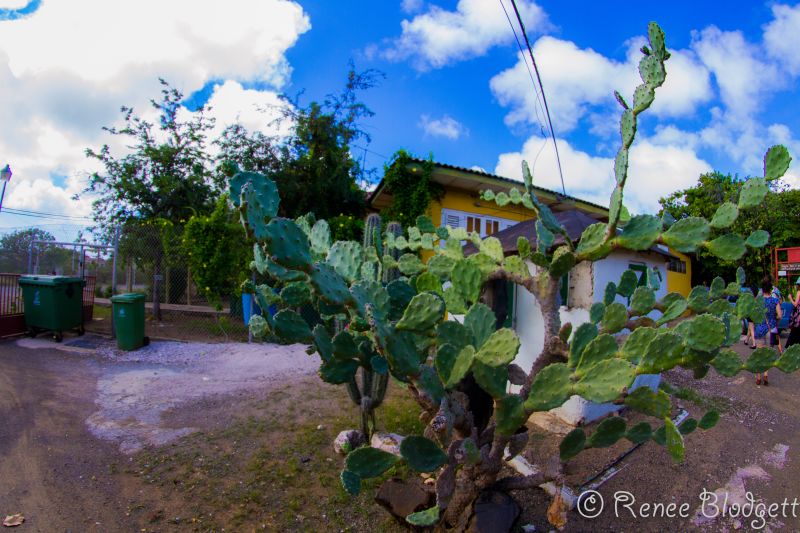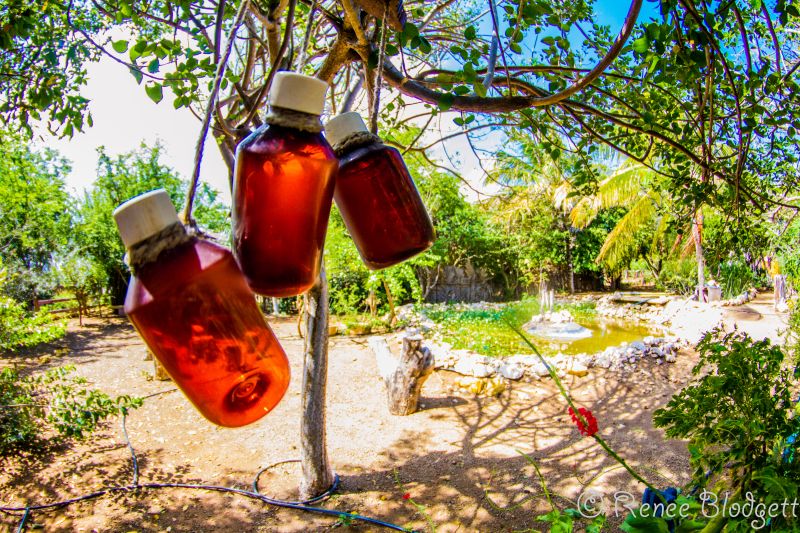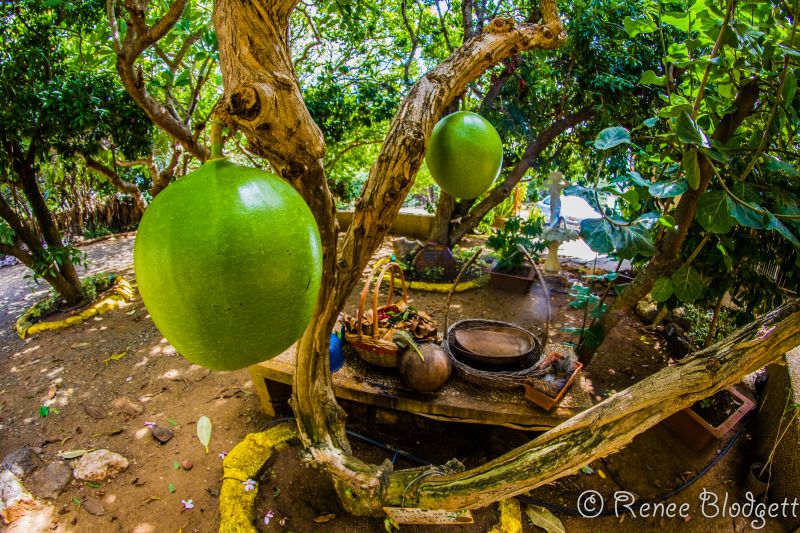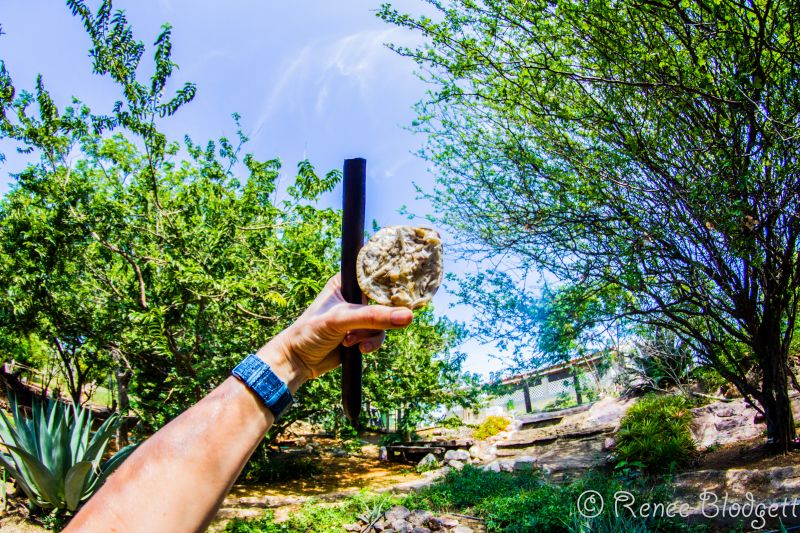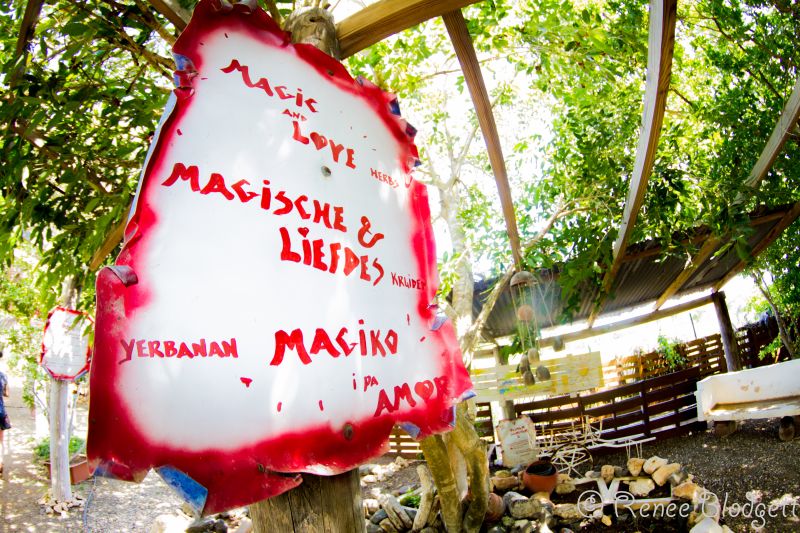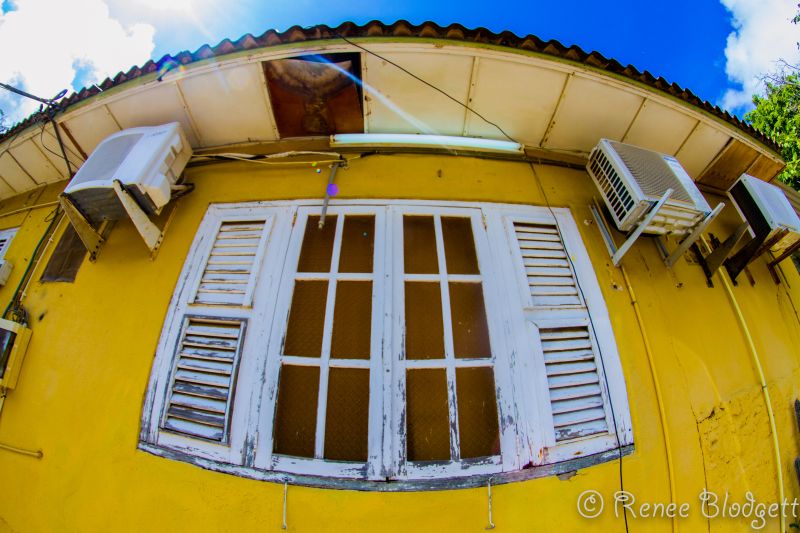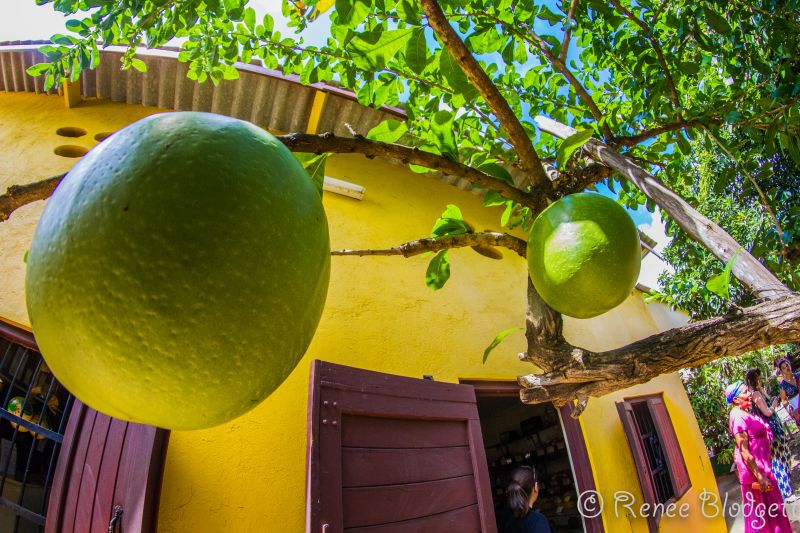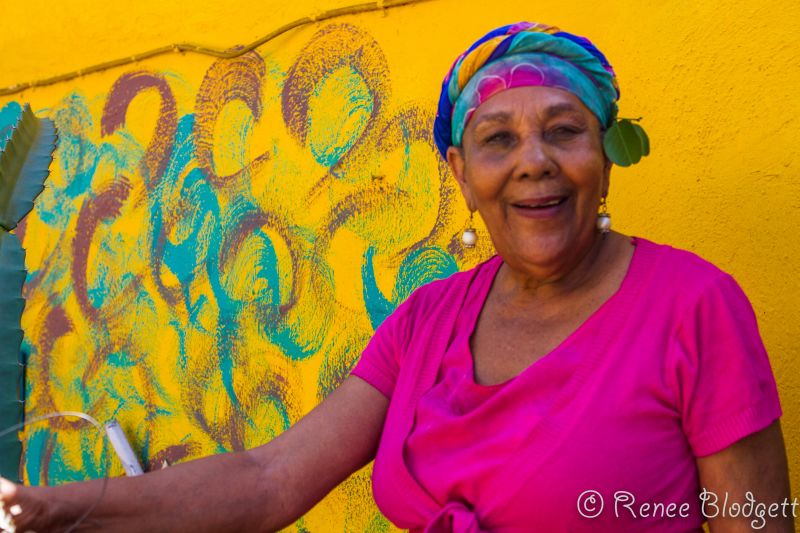I’ve always been a fan of natural herbs for as long as I can remember and that includes recipes of natural things that are known to have curing or healing properties. It could be in part from the magic wonders that my grandmother’s concoctions seemed to have when I was a child, usually created from a wive’s tale passed down from her grandmother or so the story goes. One of them was used when my cousins and I got the “winter croop” which we always seemed to get at the same time.
She would use a variety of mint oils and her magical concoction was stored in a glass bottle, the kind you’d find in old fashioned pharmacies in the sixties and seventies and today, only see in photos of early brands advertisements before plastic would take over every consumable we’d ever digest over the next several decades. When I started to hack up a storm, she’d get her glass bottle out of the cabinet, put it in a small pot filled with water on the stove and there it would sit until near boiling before she’d slap a third of it on my chest and back. By morning, I was good as new.
Old fashioned remedies are still used in many households including absurd ones like drinking water through a handkerchief upside down to get rid of the hiccups. Yes, we really did that. My grandfather swore by it and it always seemed to work. On a trip to Europe this year, I was amused to hear that someone else’s grandfather swore by it as well.
During a jaunt to Curaçao this December, I had the pleasure of meeting 75 year old Dinah Veeris who began her research in healing herbs in 1981.
Preserving traditions is often part of the reason people hang onto a recipe or natural process that has seemed to work for families over the years. Dinah wanted to preserve all the natural wonders she learned from her now 97 year old mother who works with her at the Natural Herb Farm in central Curaçao, a small island in the Dutch Caribbean a mere 40 or so miles north of Venezuela and 30’ish miles from its island neighbor, the more well known Aruba. Below, the entrance to her herb garden and home.
Dinah refers to it as secret knowledge of former generations, many of which was never written down. After studying abroad — from Holland, Cuba and Indonesia to India and the California School for Herbal Studies, she returned to Curaçao and started her herb garden plant-by-plant in 1991. She has written a book about the herbs and their use and received several awards for her input in preserving the culture and the healing herbs, which can be found in abundance on her farm. The place almost feels tribal.
From the hundreds of species of herbs at the garden, the actual benefit is much much higher. What we don’t often realize is that each herb may by useful for curing or alleviating multiple ailments.
Think about it. We wash our houses with plants, we use them for medicinal purposes, we use them as cleansers, antiseptics, immune boosters, and we use them for graver issues such as heart disease and asthma.
Says Dinah, “people are born with unique ways to heal.” Her belief is that people must live from nature. In other words, let’s return to our roots and use what the earth has given us to not just survive, but thrive. There’s a reason why Dinah’s work and people like her who are committed to preserving natural herbs, remedies and food is so important. Beyond important, it is vital to the future well-being of the human race. Sound a little dramatic?
As someone who is old enough to have used natural remedies when I got sick and fortunate enough to remember the taste of homemade meals before most Americans stopped making them, I am alarmed by the growing stats which are a direct result of our society treading away from our natural roots and you should be too.
Somewhere along the way, families began to resort to boxed macaroni and cheese or Hamburger Helper as their “go-to” dinner in the midst of a busy week. Sadly, there’s more boxed and bagged dinners in the western world than natural, organic, unprocessed food sources and medicine.
It’s not just that we resort to chemical-infused pharma products to cure our sore throats, annual flu bugs and growing depression, but the number of unnatural sources of food in a traditional American supermarket today far outweighs what is pure and real…..even in the produce aisle, we have to fish for “real organic” and the language on boxes has become so confusing that I’ve run into ill-informed Americans who think that potato chips are healthy because the phrase “natural potatoes” is written on the front. Does that mean that French Fries soaked in vegetable oil and deep fried until there’s no taste left, is healthy if the potatoes which are used don’t have chemicals in the soil?
I’m also old enough to remember what a hamburger used to taste like in America when there were no additives or hormones pumped in – in fact, I was stunned on a trip to Iceland (a great place to return to nature btw) last year when I ordered a hamburger and was astonished to find that my taste buds brought me back to when I was a child. You got it – the hamburger was made from lamb meat – no chemicals, no hormones, no additives, and I hadn’t tasted a natural hamburger like that in over twenty years. We’ve become so accustomed to crap mixed into our food that when it’s not there, our taste buds think something is off.
No truer can this be seen in small children who have only “crap food” as their frame of reference. My boyfriend and I suffer from seeing his children so addicted to pizza made with processed cheese and deep fried chicken from fast-food joints that they refuse to eat organic grilled chicken because their taste buds don’t know the difference between healthy food and garbage.
If you think that this isn’t a prolific and shocking problem in the western world, think again. And, it’s not just the poor inner city neighborhoods who suffer. Sure, the South Bronx and inner city hoods are not getting access to around-the-corner organic grocers but there are plenty of ill-informed Americans who live in middle class suburbs who would rather eat take-out pizza and chips with a soda than have a home cooked meal. Some simply don’t want to pay to eat healthier or don’t see enough value in it to do so.
What they don’t realize is that they are poisoning their bodies little by little until one day, the toxins turn into DIS-EASE and there’s no turning back. Stats don’t lie.
More than one-third (or nearly 80 million) of U.S. adults are obese. And, according to the Centers for Disease Control & Prevention, diabetes has soared 167% over the last generation (a 30 year period) in the 0–44 year age group and 118% for those aged 45–64 years of age.
What if we all thought a bit more like Dinah and resorted to natural ingredients to live by, whether that’s for a healing aid or what we eat?
A wealth of knowledge about natural plants and herbs, I found myself wanting to pick up anything and everything on her farm after listening to her stories — everything seemed to have a healing property or two.
We had just come from the Aloe Vera Plantation not far from her herb farm, where we learned that pure Aloe Vera juice acts as a natural laxative. As someone who could use a little help there now and then, I bought some and so far, it’s been working like a charm. Through Dinah, I learn about another natural laxative found in the seeds of a plant called Trimustok di Boneiru. While Aloe Vera is no doubt, healthy, its pure juice isn’t the best tasting thing in the world. Apparently, the Trimustok di Boneiru seeds taste a bit like licorice, which would be a step up if you needed assistance regularly.
While the seeds and leaves of many plants are what give you the help you most need, healing can be found in soil and even from the bark of a tree, which has many uses. Oregano, which I use all the time in Italian cooking, can help with headaches and I’m sure without as many side effects as Ibuprofen or Tylenol.
Mala Madre or otherwise known as the bad mother plant (below) helps women going through menopause.
Kalbas are used to take away thirst and replenish your body. You can also scoop the fruit out and mix it with hot milk and salt on a hot stove and like my grandmother’s mixed mint concoction helped me through a chest cold, the Kalbas fruit concoction can help a child’s asthma and inflammation.
Kalbas syrup is also used for asthma as well as a shampoo which helps to retain your original hair color. It is grown only in Curacao and South America and aside from its healing and cleansing properties, keels of boats can be made from the wood.
The naam tree is apparently good for blood pressure and diabetes since it lowers a person’s blood sugar levels. Cactus is great for good digestion and you can use the rind of a watermelon on your face to keep your skin looking radiant. Before we had toothbrushes, the twig of a Stoki leaf was used to clear food from between your teeth. Dinah still uses it and she smiles as she puts the twig in her mouth and continues to share her knowledge with us.
We walk past the Wayaka (pakwood) tree, whose seeds can be used as a blood cleanser and is good for reducing blood pressure. The pakwood leaves can be used in place of soap for washing. They call it a holy tree because it produces orange seeds and blue flowers.
The agave plant produces sisel, which can be used to make rope and of course the root, as many of us know, is used to make tequila. Yum!
We then pass through the Magic and Love herbs. I have to smile since I can’t wait to hear what Dinah will share next. Temetika, which is also known as the love bush, produces a leaf which is good to clear out tough kidney stones which won’t pass easily. You simply squeeze the leaves until they turn into a watery substance and drink it — the liquid reduces kidney stone size.
Temetika also came with an old superstition. People would write their lovers name on a leaf and bury it. If the leaf grew roots, it meant that your love was still strong. Of course, the majority of the time, it grew roots since its designed to do just that Dinah said with a coy grin on her face.
Dinah is passionate about her practice and lives and breathes it — from her book to her daily storytelling and shares which will hopefully help those she encounters in her path, she is committed to a world that uses the natural world to live by and to heal by.
The farm itself isn’t massive although the number of plants and herbs growing on it are plentiful enough to heal an entire society. Here, you can find more than 300 herb categories, including trees. While some are more common (oregano), there are also rarer herbs and trees found only in Curacao.
As you enter, there’s a small house surrounded by cacti and thereafter a courtyard with orange trees and chairs. There’s another building that houses bags, boxes and bottles of herbs you can purchase.
In the shop, I learn about Puta Luangu, a sticky and strong smelling herb, which can be used to heal wounds as well as combat diarrhea. Research has shown that it has several antibiotic qualities.
There is unusual fruit on the grounds as well. While the peel from the Lahara fruit is used to make liqueur and its fruit is used to make vinegar, rubbing it on your skin can alleviate rheumatic pains.
I discovered Flaira Kora, whose leaves are used by diabetics and externally used for itching and healing wounds. And, the seeds from a tree called Dividivi produce an oil that can alleviate hemorrhoids.
Below, a few videos I shot will give you a taste of her personality and herb farm in the heart of beautiful Curacao, the gem of an island I wished I had more time to explore.
Other frustrated souls are also taking the leap. A few years ago, I met Ron Finley at the TED Conference, who comes from a Los Angeles inner city neighborhood. People in his neighborhood couldn’t get reliable healthcare or food that wasn’t infused with pesticides so he got a warrant from the city for planting a food garden until he got 900 signatures so he could legally grow organic produce on his street without getting closed down. It didn’t come without its challenges however. Read more.
More recently, I met Erica Wides in the green room of the Dr. Oz show, who is behind the Let’s Get Real Show. Her mission is to teach the world the difference between “real food” versus processed food, which has become the predominant food Americans eat today. She said on national television, “artificial has redefined the original. Food has become a hobby or fetish for some of us, it’s become another utility like gas or electric of a real booty call.”
She asserts that we don’t really know where real food comes from anymore, and that the “foodie elite” is sending out the wrong message…things mainstream Americans don’t even care about. The elite want people to care about whether food is seasonable or organic but that’s not what the average consumer in middle America is thinking about. If it’s too expensive or takes too long to prepare, many simply aren’t interested. Hear hear Erica, whose message I thought was so important that I asked her to speak on the TEDxBerkeley stage last year.
As for what’s real? If it grows or flies, it’s food.
Other efforts I’ve been impressed by include Four Seasons chef Nick Mastrascusa on the Big Island of Hawaii, who worked with students at the Waimea Middle School to educate kids on real food, starting with planting and harvesting crops. They move the kids from the garden to the kitchen to prepare a meal, so they can learn the importance of fresh organic produce and farm-to-table dining.
Also, there’s Joseph Franzen from Louisville Kentucky who is working with local schools to implement more sustainable thinking in nearby communities. I came across his house by accident while I was filming the Germantown area of Louisville during a trip a few years ago (read my interview with him and listen to the video I shot in his house after knowing him for all of 5 minutes). His project is called Global Issues and awareness among children and adults alike is growing as a result of his very important work.
Like Dinah, Joseph isn’t just growing natural food sources. Sure, on the side and back of his shotgun house in Germantown, he has made incredible use of a small space, growing everything from black-eyed peas, asparagus, peanuts, beets, Jerusalem artichokes and potatoes to green beans, blackberries, peas, basil, stevia and luffa, which is a ripe, dried fruit that is the source of the loofah or plant sponge. He also has jops, popcorn and a flowering herb plant referred to as Jambú, which is known as toothache plant or paracress as the leaves and flower heads contain an analgesic agent spilanthol used to numb toothache.
Kudos to Dinah and people like her for their commitment to all things natural and to educating people about its merits, a hard task in the modern world, where pharma advertisements creep into our living rooms night after night and our markets are filled with more garbage than not.
Details:
Dinah Veeris
Den Paradera Curaçao
Seru Grandi 105 A, Banda Ariba
dinah@dinahveeris.com
Photo credits: Renee Blodgett.
Read through additional articles on Curacao from the most recent trip in December and also other posts on the Caribbean region.
Note: I was hosted by the Curacao Tourism Board however was not asked to write this article nor paid to — all opinions expressed are entirely my own.

Renee Blodgett is the founder of We Blog the World. The site combines the magic of an online culture and travel magazine with a global blog network and has contributors from every continent in the world. Having lived in 10 countries and explored nearly 80, she is an avid traveler, and a lover, observer and participant in cultural diversity.
She is also the CEO and founder of Magic Sauce Media, a new media services consultancy focused on viral marketing, social media, branding, events and PR. For over 20 years, she has helped companies from 12 countries get traction in the market. Known for her global and organic approach to product and corporate launches, Renee practices what she pitches and as an active user of social media, she helps clients navigate digital waters from around the world. Renee has been blogging for over 16 years and regularly writes on her personal blog Down the Avenue, Huffington Post, BlogHer, We Blog the World and other sites. She was ranked #12 Social Media Influencer by Forbes Magazine and is listed as a new media influencer and game changer on various sites and books on the new media revolution. In 2013, she was listed as the 6th most influential woman in social media by Forbes Magazine on a Top 20 List.
Her passion for art, storytelling and photography led to the launch of Magic Sauce Photography, which is a visual extension of her writing, the result of which has led to producing six photo books: Galapagos Islands, London, South Africa, Rome, Urbanization and Ecuador.
Renee is also the co-founder of Traveling Geeks, an initiative that brings entrepreneurs, thought leaders, bloggers, creators, curators and influencers to other countries to share and learn from peers, governments, corporations, and the general public in order to educate, share, evaluate, and promote innovative technologies.

